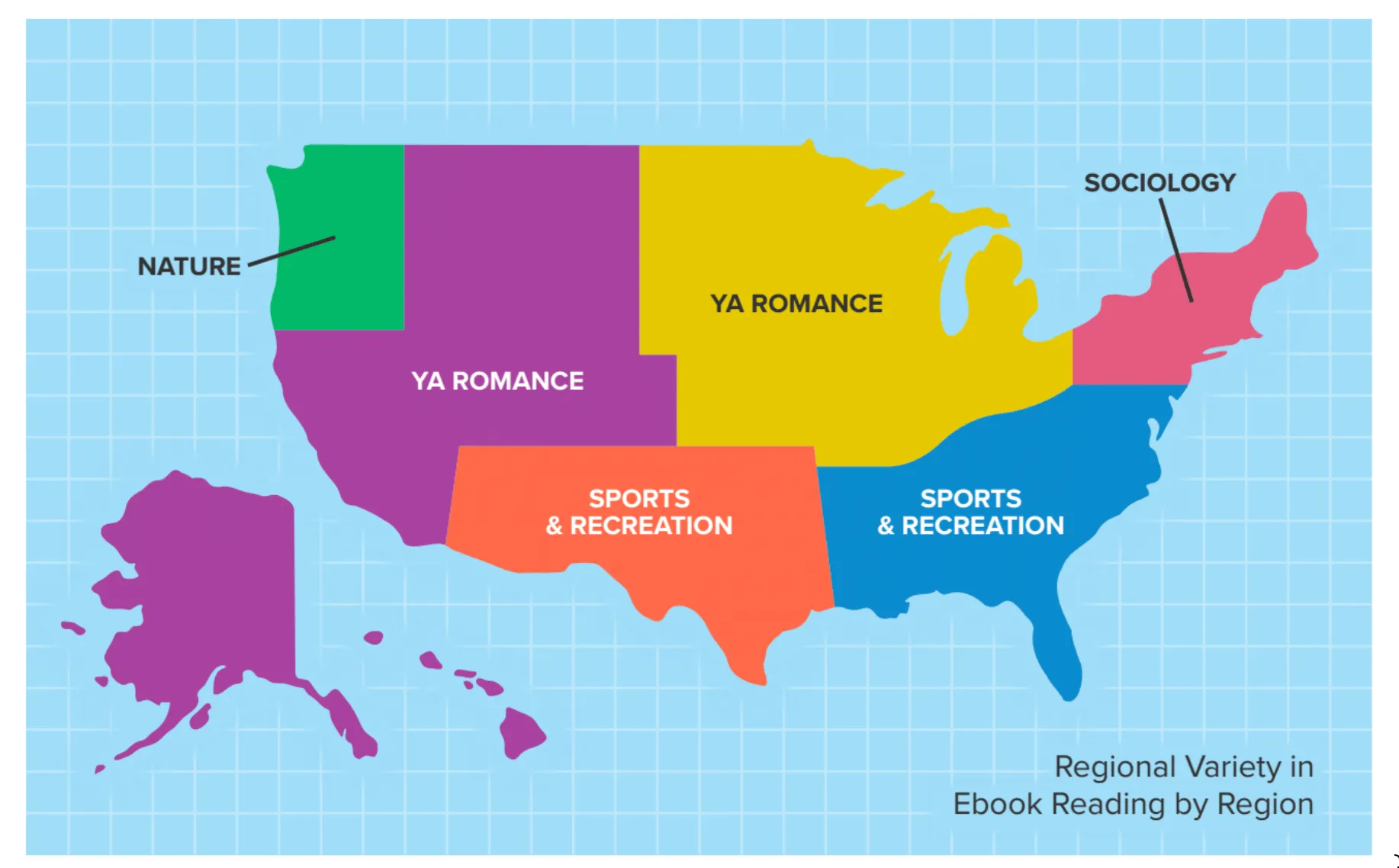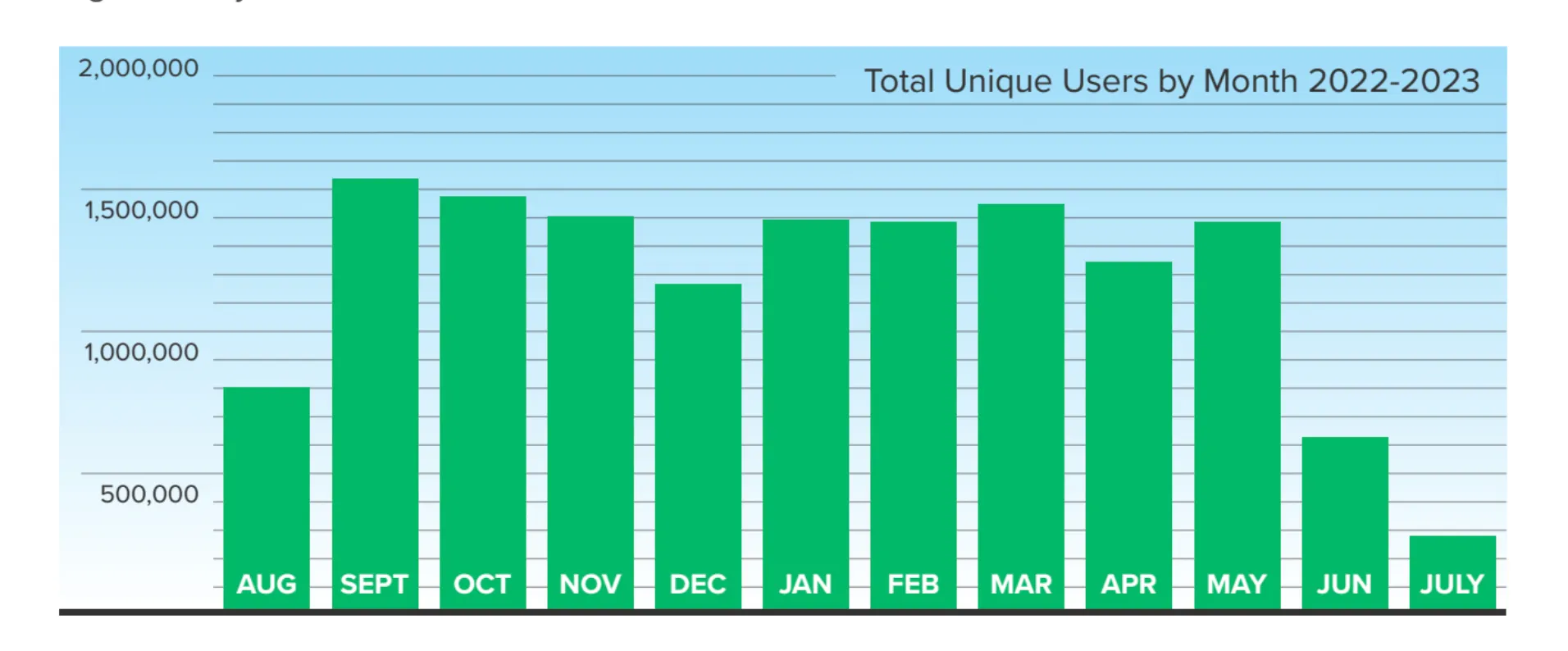
Ebook, Digital Audiobook Use Up 286% in K-12 Schools Since 2019; 20% since 2022
Since 2019, digital ebooks and audiobooks have seen a 286% growth since 2019, based on checkouts. In their latest annual report, OverDrive–which powers the apps providing digital ebooks, audiobooks, and more in school and public libraries–found that use of these resources in schools are up, based on data from 62,000 schools worldwide. No longer are digital books becoming normalized in schools, they are indeed the norm.
“The State of K-12 Reading” looks at how students in kindergarten through 12th grade are engaging with digital reading. Utilizing anonymized data from the Sora app during the 2022-2023 school year, OverDrive has compiled some of the first research on the digital reading habits of young readers.
A total of 165.7 million sessions were initiated with Sora, showcasing an 8% rise in accessing digital resources over the previous year. Even more than simply logging into the app, the data show that kids using books more than ever as well, with a 3.4% increase in the total number of books read.
The difference in a year for both digital book and digital audiobook borrowing is impressive. A total of 19.4 million ebooks were borrowed by K-12 students in the 2022-2023 school year, compared to 16.2 million the previous year. That represents a 20% increase. For audiobooks, 2.4 million were borrowed in 2022-2023, compared to 2.1 million the prior year, representing a 17% increase.
A total of 22.3 million digital items–books, audiobooks, magazines–were borrowed by K-12 students in the 2022-2023 school year.
The top states for students borrowing ebooks were Texas, New York, California, Wisconsin, and Massachusetts–none of which are particularly surprising given their student populations and the way their states operate with digital access–while the top states for digital audiobook borrowing were Texas, New York, Utah, California, and Wisconsin. Ease of access via school-supported apps no doubt has played a role in getting books in various formats to students interested in them.

Young people across the country flocked to similar genres and themes in their reading. The most popular nationwide were comics and graphic novels, followed by humorous fiction, fantasy, then biography and autobiography. Depending on the region of the country, though, there were differences in the popularity of other genres. The northeast preferred sociology, while the southeast and southwest preferred sports and recreation. The midwest and the west enjoyed YA romance, while the pacific northwest learned into nature.
Even more consistent in popularity were audiobook genres read by K-12 students. Humor topped the list, followed by fantasy, comics and graphic novels (yes, on audio!), fiction, and mystery reads. The western region accessed romance novels slightly more than mysteries.
OverDrive also looked at when students were accessing digital materials via the Sora app, too. The averages are kind of surprising–you might anticipate summer months to be the lowest in usage, and they are by number of students borrowing books, but they rank among the highest in terms of how long students are reading. The average reading time on the app was highest in July (4.6 hours), followed by June (2.6 hours), and March (2.3 hours). The data might be explained by digital programs that incentivize summer reading via the app.

So what are the kids reading? If you’ve spent any time with young people, you won’t be surprised. Juvenile fiction, consisting of books for elementary and middle schoolers, is the top category of borrowed materials. Juvenile fiction makes up 23% of all checkouts via Sora, and 86% of the top juvenile ebooks are part of a series. Of those, 56% of the books checked out are titles in the Diary of a Wimpy Kid series. Big Nate, Dog Man, The Baby-Sitters Club Graphix, and Smile round out the top five.
For non-series books, the top five titles are Drama, Ghosts, New Kid, Forget Me Not, and Serpientes de cerca (Snakes Up Close). You can see the popularity of graphic novels here, as well as humor books. It is especially noteworthy that one of the top books is in Spanish, as it is likely easier for many students to access books in Spanish via digital books than physical in their libraries for many reasons.
For young adult books, the top checkouts included Heartstopper Volume 1, The Silver Eyes, One of Us Is Lying, Naruto Volume 1, and The Summer I Turned Pretty. Again, comics and series books dominate the list.
Students do have access to a catalog of titles published for adults as well, though those are primarily available to high school students. What’s popular among those titles is also not surprising: 56% of the top borrows are for comics and graphic novels.
And when looking at the top borrowed titles across all categories on Sora, comics show up, as do familiar characters and a staple of both classroom study and American literature more broadly:
- Sonic the Hedgehog 30th Anniversary Celebration by Gale Galligan
- Miles Morales: Spider-Man, Volume 5 by Saladan Ahmed
- Iyanu Child of Wonder, Volume 1 by Roye Okupe
- To Kill a Mockingbird by Harper Lee
- I am Groot by Christopher Hastings and Flaviano Armentaro
Of course, digital reading and resources have been a sticking point in the ongoing book banning crisis. Mississippi banned Hoopla and OverDrive apps from anyone under the age of 18 without explicit parental permission in July 2023, and California’s Orange Unified Schools banned the Sora app itself after parental complaints about the content available via the app (it was reinstated). A similar ban over digital access to books happened late last year in Pulaski County Schools in Arkansas, though again, access has been reinstated.
The OverDrive report is a reminder that it’s not just adults who benefit from the availability of ebooks and digital audiobooks in libraries. It’s students, too, who can access materials for education and entertainment from their laptops, their tablets, and their cell phones. And students are doing just that–the data show they’re doing their homework while also picking up books for the fun of it.
Will the ongoing era of book banning impact ebooks? Absolutely. But will ebooks and digital audiobooks continue to grow in their use and widespread availability? Absolutely.
You can read the full report on K-12 student reading habits here.
If you are in an area experiencing rampant book bans or where access to digital apps like Sora have been choked, know there are opportunities nationwide to borrow from broad, diverse, and inclusive collections. You can discover those public libraries offering access to banned books here.









